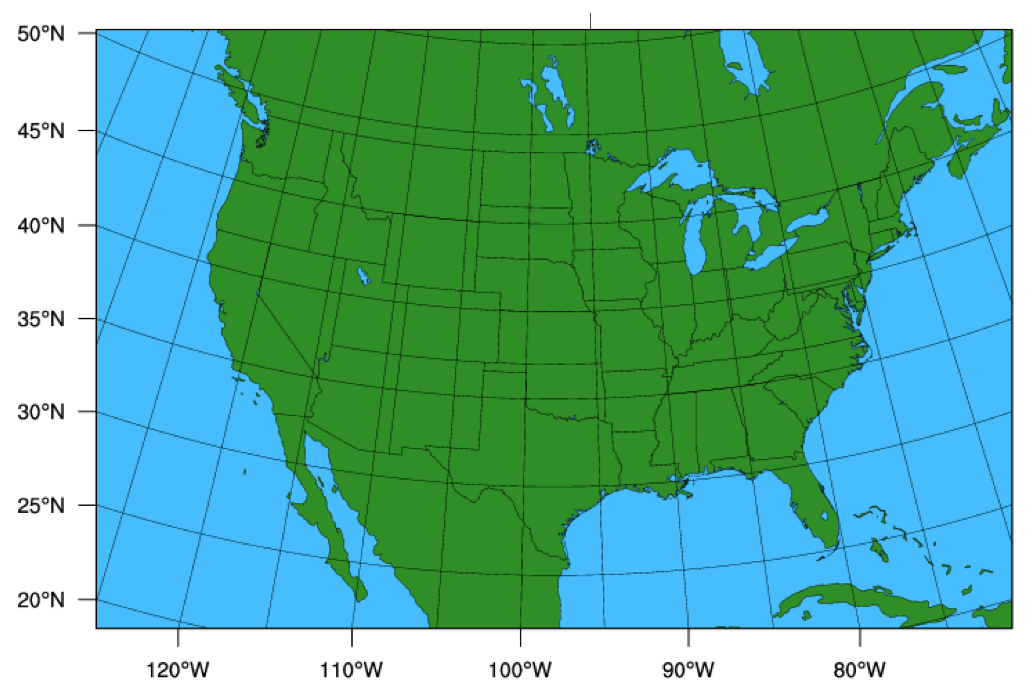
WRF Forecast Testing Extensive testing and evaluation of various physics options have been performed to ensure these schemes can realistically describe physical and dynamical process in the atmosphere. The tested schemes pull heavily from the new contributions from users, but the suite also includes older options to allow comparisons with packages whose behavior is more thoroughly known. The WRF ARW tests are conducted for the summer period from June 1 to June 28, 2010, and for the winter period from January 1 to January 28 2013. - Domain Configuration: CONUS domain with 20-km resolution, as shown in figure below.Grid Structure: 290 x 190 horizontal grid points, covering an area of 22040000 km2 40 vertical levels with model top at 30 hPa Lambert-Conformal map projection - Initial and boundary conditions: NCEP FNL Operational Model Global Tropospheric Analyses are used to provide initial and boundary conditions for the testing runs. Each single case is initialized daily at 0000UTC and run for 48-hour forecast. For both summer and winter, 28 cases for conducted for testing and evaluation. - Physics options For each of the 28 cases, a set of physics options is tested. The new physics options were the focus of the tests. These are: HUJI SBM, Noah subgrid tiling, NSSL 2-moment, 4-ice scheme, and the Thompson aerosol climatology options test CU LW SW PBL LSM MP Shallow Aerosol STD 1 1 2 1 2 4 NA NA RRTMG 1 4 4 1 2 4 NA NA CUGF 3 1 2 1 2 4 NA NA MYNN 3 1 2 1 2 4 NA NA SHCU 1 1 2 1 2 4 3 NA Thompson 1 1 2 1 2 8 NA NA Thompson 1 1 2 1 2 28 NA use_aero_icbc = F Thompson 1 1 2 1 2 28 NA use_aero_icbc = T Lake 1 4 4 1 2 4 NA NA Tile 1 4 4 1 2 4 NA NA KFCLD 1 4 4 1 2 4 NA NA Aerosol 1 4 4 1 2 4 NA aer_opt = 1 Aerosol 1 4 4 1 2 4 NA aer_opt = 2 - Verification All WRF results are compared with FNL surface and upper air analysis. Domain average BIAS and RMSE are calculated.